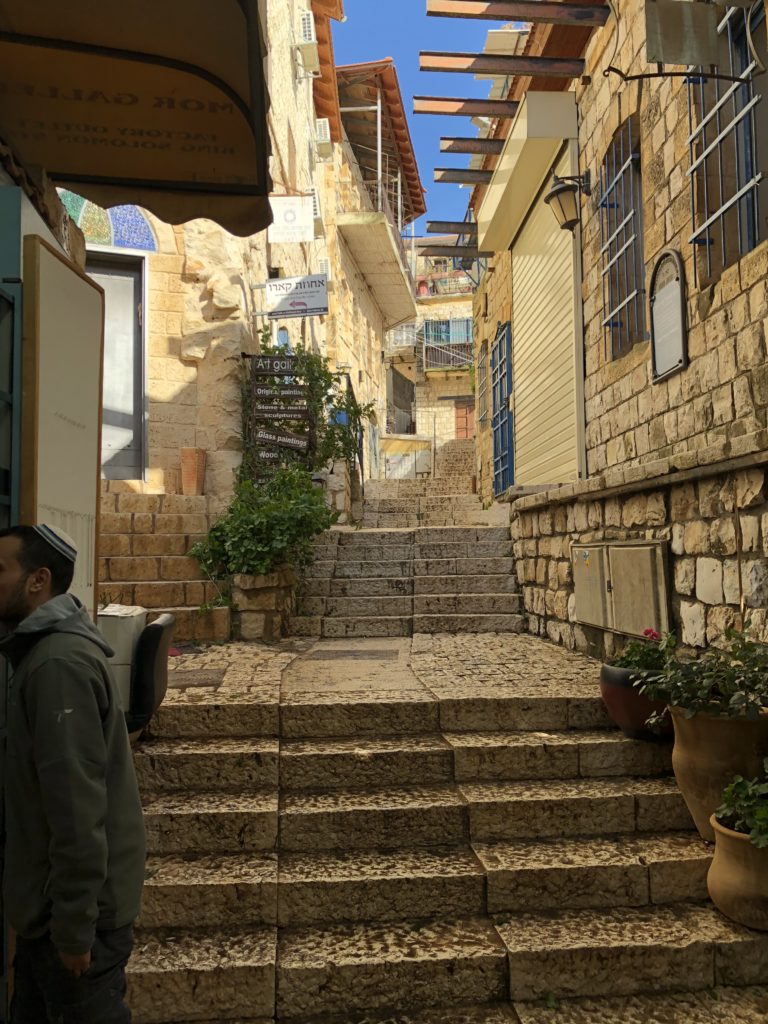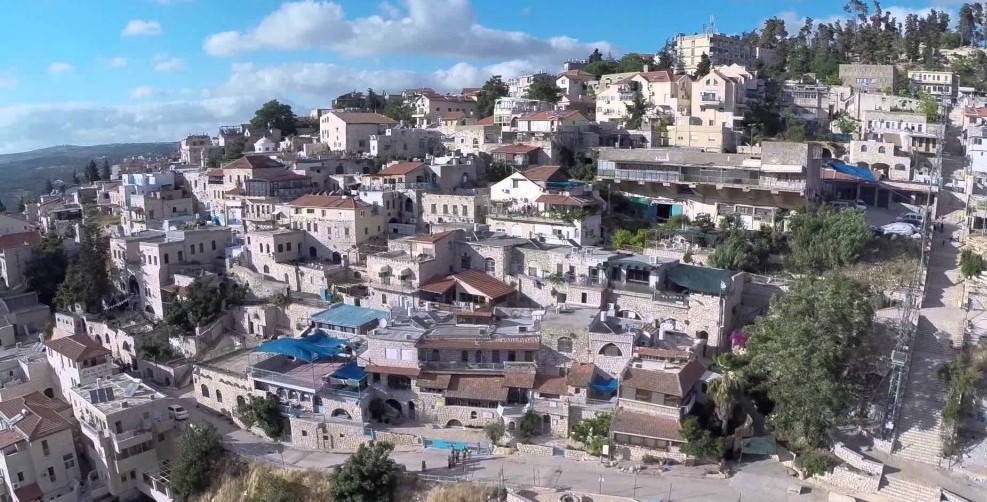Tzfat, Israel
A recent visit to Tzfat in northern Israel provided a window into 2000 years of Middle East history, and a thriving city of culture, spirituality and life.
Tzfat (also transliterated from Hebrew as Safed, Zefat, Zfat, Safad, Safes, Safet, and Tsfat), is 2900 feet above sea level in the mountains of the Upper Galilee. It has been prized by numerous invaders because of its strategic military value. Romans, Byzantines and Muslims ruled the area from the First Century BCE through most of the Eleventh Century; Crusaders arrived in 1099, and Mamluks drove out the Crusaders in 1291. All had significant military installations in Tzfat. The Crusaders’ Citadel, at the highest point in the old city, is undergoing restoration, revealing both Crusader and Mamluk construction.
In 1492, King Ferdinand II expelled all the Moors and Jews from Spain. Many of the Jews were attracted to Tzfat because of its connection to early Kabbalist mysticism. Kabbalah teaches the deepest insights into the essence of God and God’s interaction with the world and the purpose of creation. Tzfat has ever since been considered the center of Jewish mysticism. In the 16th century Tzfat attracted Jewish scholars, among them Rabbi Isaac Luria, who expanded Kabbalah study to new heights. To this day Lurianic Kabbalah is the dominant form of Kabbalah study throughout the world.
 Today’s Tzfat is still a center of learning, its many seminaries and yeshivas attracting young men and women, who can be seen walking in groups between schools, restaurants and shops. Following the 1948 war of independence, Tzfat attracted artists, who now form a colony and blend Kabbalah and art. Tzfat is also an archaeologist’s dream. Tzfat has been struck by multiple earthquakes, the most serious of which, in 1837, destroyed the city completely. After each destruction, the city was rebuilt on top of the debris of demolished structures. That practice does not result in the most stable construction, but it does enable archaeologists to expose levels of development from past times.
Today’s Tzfat is still a center of learning, its many seminaries and yeshivas attracting young men and women, who can be seen walking in groups between schools, restaurants and shops. Following the 1948 war of independence, Tzfat attracted artists, who now form a colony and blend Kabbalah and art. Tzfat is also an archaeologist’s dream. Tzfat has been struck by multiple earthquakes, the most serious of which, in 1837, destroyed the city completely. After each destruction, the city was rebuilt on top of the debris of demolished structures. That practice does not result in the most stable construction, but it does enable archaeologists to expose levels of development from past times.
Tzfat’s resident population of about 27,000 includes young families pushing strollers over cobblestone walks and alleys, artists, teachers, students, and businesses serving both residents and tourists. Tourist groups are a prominent part of the ambiance, coming from all over the world. The fastest-growing country of origin of tourists in Israel is China. In fact, a film on the 1948 war in Tel Aviv’s Independence Hall has subtitles in Chinese. Israel had 3.6 million tourists in 2017, in a country with 8,650,000 people. If the U.S. attracted tourists in the same proportion to its population, it would have 136 million tourists a year.
 Tourists are attracted by Tzfat’s natural beauty and charm as well as its history and religious significance. Built on a hill, a walk in almost any direction involves climbing endless steps. Buildings adhere to no grid pattern, and are either built touching each other or are separated by walkways or steps. Streets and alleys are winding, so views are usually limited to a few hundred feet, drawing you to see what lies around the bend. On a map the streets appear to be nearly on top of each other, but the steep hillside offsets adjacent streets by ten feet or more vertically.
Tourists are attracted by Tzfat’s natural beauty and charm as well as its history and religious significance. Built on a hill, a walk in almost any direction involves climbing endless steps. Buildings adhere to no grid pattern, and are either built touching each other or are separated by walkways or steps. Streets and alleys are winding, so views are usually limited to a few hundred feet, drawing you to see what lies around the bend. On a map the streets appear to be nearly on top of each other, but the steep hillside offsets adjacent streets by ten feet or more vertically.
While tourists weave their way through enchanting streets and alleyways, and visit the archaeological discoveries unearthed in many buildings, Tzfat’s families and students live normal lives in this picturesque and fascinating ancient city.
